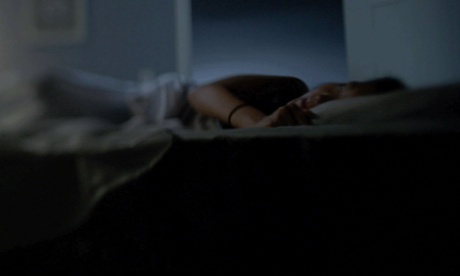
For most of us, collapsing in bed is a reward after a full day. For some, like the eight interview subjects in The Nightmare, it’s just the start of a second, secret (and terrifying) life. Expanding his style from marvellous short The S From Hell (about unnerving corporate logos) and Room 237 (about people obsessed with signs and wonders they feel are hidden in Stanley Kubrick’s The Shining) film-maker Rodney Ascher’s blend of staged recreations, voiceover and artful composition has secured himself a position as one of the most unique documentarians working today. Moreover, with The Nightmare he’s made a nonfiction film more frightening (yet strangely entertaining) than most of today’s narrative horror films.
Sleep paralysis is the bizarre condition at the heart of The Nightmare. Its victims spend their nights in a half-state of consciousness. They are perceptive of their surroundings, but unable to rouse themselves. If this weren’t eerie enough, many experience ghastly hallucinations, pumping their minds with pure fear. What’s weird is that many sleep paralysis suffers share very similar visions.
Whether in New York, Michigan or London, Ascher’s subjects describe the Shadowmen, dark and imposing figures that have violated their dreams since childhood. In the light of day, one can shrug and say: “Hey, the brain does weird things” but in a state of semi-sleep these encounters can take on supernatural affectations. What’s so exciting is how Ascher’s film-making style can recreate this scary vibe so well. Even the talking-head interviews are shot in an interesting way, with unnerving use of negative space or framing that allows for the film-making crew to be seen in corners, like Michael Myers through a kitchen window.
The film as a whole comes off as a bit repetitive, but it also feels like a rolling, rambling dream, and as each new curious corner of this condition is exposed, it works as both an attraction and a repellent. Learning about these quirks of the mind is undeniably cool, and the “horror scenes” are exciting. But knowing that this happens to real people is almost too gruesome to bear, especially because it could very well start happening to you.
There’s precious little that’s understood about this condition and the fact that, for some, just learning about it is enough of a trigger. Yes, by watching The Nightmare, I am now prime candidate to have each of my evenings turned into a hell that few would understand. I hope Rodney Ascher has a good lawyer if that ends up being the case.

